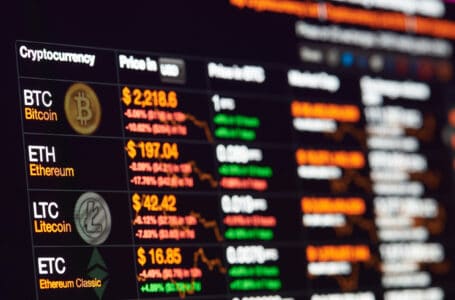Senators And Regulators Insists That The $60 Billion Cryptocurrency Crash Isn’t The End
It’s been a brutal few weeks for the crypto market. Half a trillion dollars was wiped off the sector’s market cap as terraUSD, one of the most popular U.S. dollar-pegged stablecoins, imploded virtually overnight.
Meanwhile, digital coins such as ether continue to take a beating on the price charts, as the sell-off keeps hammering the industry.
Some investors have called the events of the last month a Bear Stearns moment for crypto, comparing the contagion effect of a failed stablecoin project to the fall of a major Wall Street bank that ultimately foretold the 2008 mortgage debt and financial crisis.
“It really revealed some deeper vulnerabilities in the system,” said Michael Hsu, acting Comptroller of the Currency for the U.S. Treasury Department.”
“Clearly, you saw contagion, not just from terra to the broader crypto ecosystem, but to tether, to other stablecoins, and I think that’s something that wasn’t assumed. And I think that’s something people have to really pay attention to.”

How The Government And The Public Have Responded
So far, government officials don’t seem to be worried about a crypto crash taking down the broader economy.
Several senators and regulators told CNBC on the sidelines of the DC Blockchain Summit this week that the spillover effects are contained, crypto investors shouldn’t freak out, U.S. regulation is the key to success for cryptocurrencies, and crucially, the crypto asset class isn’t going anywhere.
A contained event Already?
In early May, a popular stablecoin known as terraUSD, or UST, plummeted in value, in what some have described as a “bank run,” as investors rushed to pull out their money. At their height, Luna and UST had a combined market value of almost $60 billion. Now, they’re essentially worthless.
Stablecoins are a type of cryptocurrency whose value is tethered to the price of a real-world asset, such as the U.S. dollar. UST is a specific breed, known as an “algorithmic” stablecoin. Unlike USDC – another popular dollar-pegged stablecoin, – which has fiat assets in reserve as a way to back their tokens, UST depended on computer code to self-stabilize its value.
UST stabilized prices at close to $1 by linking it to a sister token called Luna through computer code running on the blockchain – essentially, investors could “destroy” one coin to help stabilize the price of the other. Both coins were issued by an organization called Terraform Labs, and developers used the underlying system to create other applications such as NFTs and decentralized finance apps.
The Basic problem And Who Is Responsible
Coin Metrics’ Nic Carter tells CNBC that no algorithmic stablecoin has ever succeeded, noting that the fundamental problem with UST was that it was largely backed by faith in the issuer.
Sen. Cynthia Lummis, R-Wyo., who is among the most progressive lawmakers on Capitol Hill when it comes to crypto, agrees with Carter.
“There are a couple types of stablecoins. The one that failed is an algorithmic stablecoin, very different from an asset-backed stablecoin,” Lummis told CNBC. She said she hoped consumers could see that not all stablecoins are made equal and that choosing an asset-backed stablecoin is essential.
That sentiment was echoed by the managing director of the International Monetary Fund at the World Economic Forum’s annual meeting in Davos.
Georgieva also stressed that stablecoins not backed by assets to support them are a pyramid scheme and emphasized that the responsibility falls to regulators to put up protective guardrails for investors.
AllIn1Bitcoins works diligently to offer impartial and trustworthy data on cryptocurrency, finance, trading, and stocks. Nonetheless, we are unable to furnish financial counsel and encourage users to undertake their own inquiries and due diligence.












